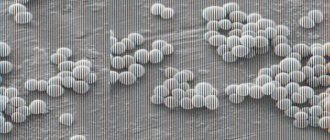Raynaud's disease is one of the most mysterious diseases that affects about 5% of the world's population. It was first described in 1862 by French physician, scientist and educator Maurice Raynaud , who observed a girl suffering from sudden attacks of numbness in her limbs. Based on an analysis of five similar cases, the author concluded that these symptoms belonged to a new, previously unknown disease, and described in detail all its symptoms.
The disease manifests itself as sudden attacks of spasm in the small arteries of the arms and/or legs, and sometimes in other peripheral parts of the body - the tip of the nose and ears. As a result, blood ceases to flow in sufficient quantities to the cells of these parts of the body, leading to the development of so-called ischemia (bleeding). As a rule, this is preceded by hypothermia or severe stress. As the disease progresses, it can eventually lead to a serious complication - gangrene of the fingers.
Most often, the disease occurs in residents of cold climates and mainly affects middle-aged people (40-50 years old). Raynaud's syndrome occurs 4 times more often in women than in men.
1 General blood test
2 Diagnosis of Raynaud's syndrome
3 Diagnosis of Raynaud's syndrome
When talking about this disease, we mean two types of pathology: Raynaud's disease and Raynaud's syndrome .
Raynaud's disease is considered an independent disease with an unknown cause.
Raynaud's syndrome may be a manifestation of any other underlying diseases. When they talk about Raynaud's phenomenon, they most often (in most patients) mean Raynaud's syndrome. And only 15% of patients have an independent disease with the same name.
A mandatory sign of this disease is symmetrical damage to the limbs.
Causes of Raynaud's syndrome
Raynaud's syndrome can be a consequence of the following diseases and factors:
- various autoimmune connective tissue pathologies (systemic scleroderma, rheumatoid arthritis, systemic lupus erythematosus);
- inflammatory diseases of blood vessels - systemic vasculitis (granulomatosis or Wegener's disease, polyarteritis nodosa, drug-induced vasculitis, cryoglobulinemic vasculitis);
- blood diseases (thrombophlebitis, thrombocythemia, cryoglobulinemia, leukemia);
- diseases of the endocrine system (pathology of the adrenal glands and thyroid gland);
- hypothermia, stress, emotional overstrain;
- long-term use of medications that have a vasoconstrictor effect (migraine medications).
Etiology
The etiology of Raynaud's disease is not specified, as with other angiotrophoneuroses. Hereditary predisposition, constitutional defects of vasomotor innervation and its functional disorders of an unexplored nature are important; Psychogenic factors and trauma appear to play a certain role. n. pp., chronic intoxication with nicotine, alcohol. Raynaud's disease is more often observed in young women, sometimes developing after infectious diseases, in some cases after exposure to provoking factors (hypothermia, excessive insolation, fatigue). Pay attention to the relatively high incidence among typists and pianists, as well as the combination of R. b. with migraine (see).
The cause of the development of Raynaud's syndrome may be systemic connective tissue diseases and related processes (scleroderma, dermatomyositis, Hamman-Rich disease); ovarian dysfunction, diseases of the thyroid gland and adrenal glands; diseases of the nervous system (for example, inflammation of the anterior roots of the spinal nerves; diseases leading to cervicobrachial syndrome (accessory ribs, muscle hypertrophy); obliterating lesions of the vessels of the extremities (see), cryoglobulinemia, etc. Thermal lesions can lead to the development of Raynaud's syndrome with chronic exposure to cold such as trench foot (see) or the consequences of sharp temperature fluctuations; mechanical damage to the hands, especially vibration disease (see), intoxication with certain poisons - ergot, heavy metals (lead, mercury), vinyl chloride. These same exogenous effects in R. b. can act as factors contributing to its progression.
Symptoms of Raynaud's disease
Symptoms of the disease can begin quite suddenly, for example, after doing laundry or washing dishes in cold water, walking in the cold, sometimes after exposure to stress. Most often, 2-5 fingers and toes are affected, in more rare cases - other protruding parts of the body: ears, nose, chin and even tongue.
The attack is manifested by a sharp pallor of the fingers, they become white and very cold, then the skin color acquires a bluish tint, and after the end of the attack, the fingers become purple-bluish and painfully hot and swollen.
Over time, attacks become more frequent, can occur for no reason, and their duration increases to 2 hours.
Due to poor nutrition of the skin, the pads of the fingertips become flattened, the skin becomes dry, begins to peel, and hard-to-heal ulcers may appear around the nails. In severe cases, tissue necrosis can also begin - dry gangrene.
Examination of capillaries (capillaroscopy) in patients suffering from Raynaud's syndrome often does not reveal significant changes.
Clinical picture
The II-IV fingers and toes are predominantly affected; later, other parts of the body that are exposed to cooling (nose, ears, chin) may also suffer. Raynaud's disease, in contrast to Raynaud's syndrome, is characterized by strict symmetry of manifestations, earlier involvement of the arms than the legs, and stages in the progression of the disease.
Usually during R. b. There are 3 stages.
In stage I
short-term attacks of ischemia of the fingers are observed, lasting for several minutes. Due to cooling of the hands (washing with cold water, rinsing clothes), less often under other circumstances (excitement, smoking), sudden numbness of the fingers or their distal parts occurs. The fingers become cold, alabaster-white (symptom of a “dead finger”), burning and aching pains appear, which can become difficult to bear even with moderate cooling.
These symptoms disappear within a few minutes when the exposure to cold stops. Warming the hands helps improve the condition, even if the attack was not provoked by a thermal external influence. Characteristic are relapses of attacks with a gradual shortening of interictal periods (during these periods no deviations from the norm are noted) and the transition of the disease to the next stage.
Stage II
characterized by an increase in the duration of attacks up to an hour or more, their occurrence sometimes without noticeable external causes, and the development of a cyanosis phase during the termination of the attack, sometimes with slight swelling of the tissues.
Rice.
1. Angiotrophoneurosis. Pallor, acrocyanosis and gangrene of the fingers (Raynaud's disease) Fig. 2. Angiotrophoneurosis. Pallor, acrocyanosis and gangrene of the fingers (Raynaud's disease) Fig. 3. Angiotrophoneurosis. Pallor, acrocyanosis and gangrene of the fingers (Raynaud's disease) In stage III
attacks lead to profound local changes: blisters with hemorrhagic contents form on the skin of the fingers, necrotic changes, superficial ulcers, and dystrophic changes in the nails appear (see color Fig. 1-3). Possibility of massive tissue necrosis and gangrene with R. b. at stages I-II it is questioned; they are more typical for Raynaud's syndrome with significant changes in blood vessels (scleroderma, arteritis) or are caused by profound disturbances in the rheological properties of blood in the vascular bed of the extremities when they are cooled (cryoglobulinemia).
Diagnosis of Raynaud's syndrome
Since Raynaud's syndrome often occurs against the background of rheumatic and autoimmune diseases, laboratory research methods aimed at identifying them become important. The following types of tests are taken (for more details, see rheumatological examination):
- general blood test (increased ESR, decreased hemoglobin, leukopenia and thrombocytopenia are important);
- biochemical blood test (with Raynaud's syndrome, significant changes, as a rule, are not detected);
- coagulogram;
- general urine analysis;
- immunological blood tests (level of immunoglobulins, rheumatoid factor, cryoglobulins, various autoantibodies, for example, antinuclear antibodies, antibodies to DNA).
1 Treatment of Raynaud's disease
2 Reflexology (acupuncture)
3 Treatment of Raynaud's disease
Diagnosis
The diagnosis of the disease and Raynaud's syndrome is assumed on the basis of characteristic complaints and a description of a typical attack. The initial diagnosis is simplified by the fact that the “dead finger” symptom is usually easily reproduced using a cold test.
X-ray diagnostics
disease and Raynaud's syndrome consists of determining the degree of trophic changes in the bones and surrounding soft tissues, studying the patency and structure of regional arteries.
X-ray examination of soft tissues is carried out using screenless radiography with “soft” radiation on a special film. Initial rentgenol. manifestations are expressed in the appearance of swelling of the subcutaneous tissue on the affected fingers, blurring of its borders, homogenization and decreased transparency of its shadow on the radiograph. Subsequently, signs of fibrosis are determined in the form of gross restructuring of the soft tissue structure. The subcutaneous tissue acquires a rough cellular-stringy structure, its contours are not differentiated on radiographs. On the lateral surfaces of the interphalangeal joints, additional soft tissue formations are identified, caused by thickening of the skin folds. Due to the wrinkling of the skin, its shadow on the radiograph has a striated character and a jagged outer contour. Occasionally, dense shadows of calcifications are detected in soft tissues.
Bone manifestations of R. b. and Raynaud's syndrome are characterized by dystrophic changes in the form of osteoporosis (see), osteolysis (see), as well as osteonecrosis (see). In this case, pathological changes are usually localized and more pronounced in the distal phalanges of the fingers. In the early stages of osteoporosis, a rarefaction of the trabecular pattern of the bone occurs, a thinning of its compact substance, mainly at the bases of the distal phalanges.
Osteoporosis subsequently spreads to other areas of the hand. Cyst-like zones of bone tissue restructuring often develop. Concentric atrophy of the distal phalanges occurs, leading to a decrease in their volume, thinning and sharpening of the nail tubercles. A more accurate quantitative assessment of osteoporosis is possible using the methods of radiographography (see) and densitometry (see).
X-ray of the hands of a patient with Raynaud's disease (late stage): multiple clearing of bone tissue in areas of osteoporosis and osteolysis of the distal phalanges of the fingers.
In parallel with osteoporosis, the phenomena of osteolysis develop, which initially affect the nail tuberosities, and then spread to a significant part of the phalanx or the entire phalanx as a whole (Fig.). Due to pronounced compaction of soft tissues, ankylosis (see) or subluxation in the interphalangeal joints may develop. In severe cases, osteonecrosis is detected.
Angiography (see) has limited value for R.'s diagnosis, but helps to identify organic forms of blood flow disorders; in the later stages of R. b. Stenosis of the digital arteries was noted.
Instrumental research methods have auxiliary diagnostic value. Skin thermometry (see) and thermography (see), rheography (see), capillaroscopy (see), plethysmography (see), oscillography (see Arterial oscillography) are used.
Differential diagnosis
disease and Raynaud's syndrome are the most difficult. Recognition of R. b. It is considered possible, as a rule, no earlier than after 2 years of observation, as a result of excluding all other diseases that can cause the development of recurrent ischemic syndrome of the distal extremities, especially scleroderma. With systemic scleroderma, Raynaud's syndrome is observed in more than 70% of cases, sometimes several years ahead of the appearance of other symptoms pathognomojatic for this disease. However, as a rule, with systemic connective tissue diseases, already in the early stages, outside of attacks, cyanotic fingers remain and there are signs of organic circulatory disorders. Early identification of cases of Raynaud's syndrome caused by occupational exposures (vibration disease) is relevant. In some cases, diagnose R. b. It helps to detect spasm of the fundus vessels during an attack. Instrumental studies are most informative when comparing data between attacks and during an attack, as well as when using functional and pharmacological tests. It is believed that with R. b., in contrast to similar secondary forms of pathology (Raynaud's syndrome), in the interictal period there is not a decrease, but rather an increase in blood flow indicators, vasodilation according to capillaroscopy, but in response to a cold test, vasospasm occurs and sharply blood flow decreases. Angiography under active pharmacological conditions. samples help to distinguish functional changes from organic ones. In the differential diagnosis with cryoglobulinemia, biochemical and immunological data are important - an increase in the last titer of Cold hemagglutination, usually above 1:30,000 (normal value 1:64), an increase in the content of immunoglobulins type M (see Immunoglobulins), sometimes M -gradient on the electrophorogram of proteins, positive Coombs test (see Coombs reaction).
Treatment of Raynaud's disease
Modern medical capabilities make it possible, if not to cure completely, then to significantly reduce the severity of the symptoms of Raynaud's disease. They use medication, physiotherapy, reflexology (acupuncture). Treatment of diseases that lead to the development of symptoms of Raynaud's syndrome is important.
Measures to prevent exacerbation of Raynaud's disease:
- to give up smoking;
- prevention of hypothermia (try not to overcool your hands, feet and face, dress according to the weather, make sure your shoes are dry, wear mittens in winter, etc.);
- adherence to sleep and rest patterns.
Highly qualified rheumatologists at MedicCity will help you cope with the manifestations of various rheumatological diseases. Our clinic diagnoses and treats rheumatoid arthritis, ankylosing spondylitis, reactive arthritis, gout, osteoarthrosis, osteoporosis, Sjogren's disease, systemic lupus erythematosus, systemic vasculitis, dermatomyositis, systemic scleroderma, rheumatism, etc. The most modern treatment methods are used. Trust the professionals!
Treatment
Treatment of Raynaud's disease is only symptomatic. The intensity is determined by the stage of the disease. At stages 2-3, ganglion blockers, analgesics, and vasodilators can be used. Physiotherapy, including magnetic fields, can also be performed.
With the development of neurasthenic and hypochondriacal disorders, sedatives, psychotherapy, and antidepressants are indicated. Sometimes they resort to plasmapheresis, which can have some relief.
Among the surgical methods, sympathectomy can be noted. However, the improvement resulting from surgery is most often temporary.









